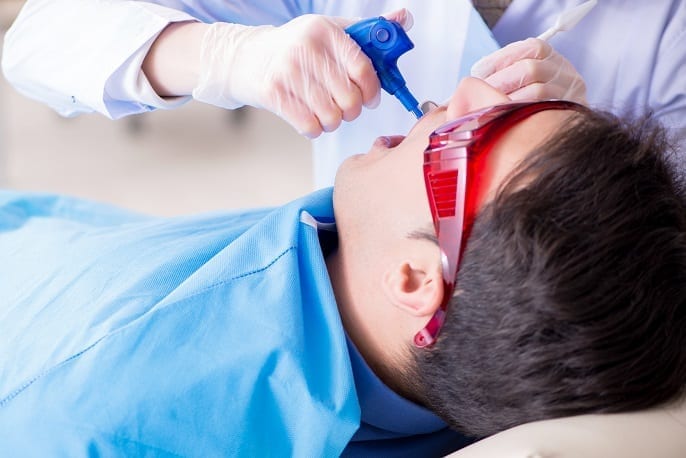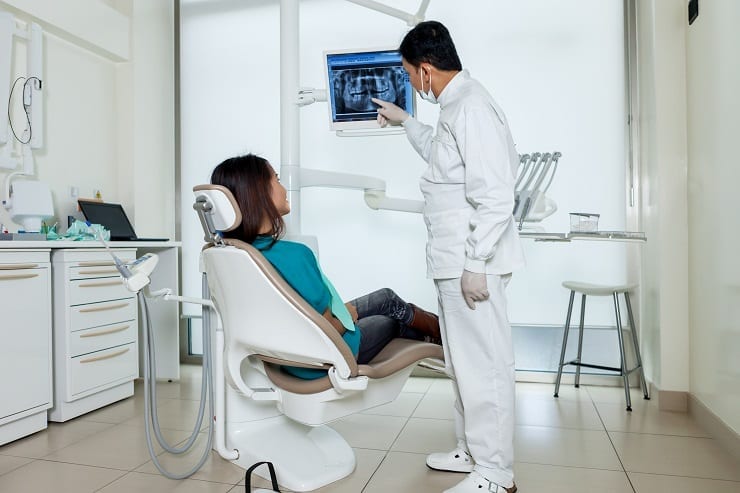Bangkok, Thailand is a place with first-world level healthcare that’s in many ways better and more affordable than those available in first world countries like the United States of America and the United Kingdom as well as the European Union at large. Thantakit Clinic in Bangkok is one particular clinic out of many that embodies Thailand’s proud heritage of having world-class medical and dental services made available through medical and dental tourism.
With that in mind, perhaps it’s about time you’ve considered giving Bangkok a try when it comes to orthodontic services. After all, it’s one of the most cost-effective and affordable dental services in the world that doesn’t compromise its quality as well. You can eat your cake and have it too by availing of Bangkok orthodontics.
Page Contents
What Is Orthodontic Dentistry?

Orthodontics is a dentistry specialty dealing with the correction, prevention, and diagnosis of teeth and jaws that aren’t positioned properly. In other words, it’s a method of straightening crooked teeth, usually through braces. It can also concentrate of changing the facial growth and shape of the individual, which is also known as dentofacial orthopedics. It’s extremely common for people to have misaligned jaws and teeth, leading to underbite or overbite.
30 percent of the world population suffers from malocclusions severe enough to require orthodontic treatment. It can take several months or a few years of wearing braces to correct dental malocclusion. There are also other appliances available to assist with teeth placement improvement, such as retainers or invisible braces like the Invisalign brand of clear braces. Jaw surgery might be called for particularly severe instances of malocclusion, but usually braces are enough to correct everything.
Orthodontic Prices at Thantakit Clinic
At Thantakit, you can avail of orthodontic services at the most affordable prices complete with 2-year warranty compared to the much more expensive prices for braces in your local dental clinic or hospital. This is coupled with the chance to vacation at all of Bangkok’s many tourist hotspots once the operation is over. To wit:
| ORTHODONTIC SERVICE | REGULAR PRICES | THANTAKIT PRICES |
|---|---|---|
| Metal Braces | $3,000 to $7,000 | ฿50,000 to ฿80,000 ($1,650 to $2,640) |
| Ceramic Braces | $4,000 to $8,000 | ฿80,000 to ฿120,000 ($2,640 to $3,960) |
| Speed Braces | $4,000 to $6,000 | ฿100,000 to ฿160,000 ($3,300 to $5,280) |
| Invisalign | $4,000 to $9,000 | ฿100,000 to ฿250,000 ($3,300 to $8,250) |
| Retainers (Each Arch)$500 to $1,000 | $500 to $1,000 | ฿5,000 ($165) |
Take note that these are the prices at the time of this writing. The prices are subject to change due to any number of reasons, such as foreign exchange fluctuations or a sudden economic downturn.
What Are Metal Braces?

Traditional metal braces are metal brackets with wires that most people think of when they hear the word “braces”. It’s also usually associated with nerds, children who have rich parents that can afford buying these braces, kindergarten insults about how someone wearing these dental appliances has a “brace face”. Regardless, they remain quite effective at gradually and relatively painlessly moving and shifting malocclusion to a straighter and more aesthetically pleasing placement. To wit, here are the properties of the metal braces of the 2010s and 2020s.
- Notable Modern Improvements: Notable improvements have been made to the metal braces of yore that people think of back in the 1970s to 1990s. Although the ugly “metal mouth” brackets of yesteryear are still being portrayed as existing in current media, they’ve actually been long replaced with less noticeable and smaller braces that have better aesthetics and are less obtrusive than the braces as known by popular culture. It can also straighten your teeth from half a year to 2 years.
- Heat-Activated Archwires: The 21st Century metal brace also comes with new heat-activated archwires that use your body heat in order to help your teeth move more quickly into proper place as approved by your orthodontist. This makes the whole ordeal of dealing with braces more bearable to the Millennial and Gen Z youth of today when compared to the more torturous braces of the past.
- Pros and Cons: Metal braces remain the least expensive type of brace out there. Children wearing these appliances can avail of colored bands as well in order to express themselves individually through such braces. However, in turn, they remain the most noticeable type of braces. Your classmates will know if you’re wearing them. They’re hard to hide when you smile. They can sabotage your dental aesthetics as long as you wear them even though they’re there for the sake of improving your look.
What Are Ceramic Braces?
Ceramic braces are the same shape and size of metal braces. However, more people opt for them instead of metal ones because they feature clear or tooth-colored bracket that blend with the tooth better compared to the “metal mouth” look of traditional metal braces. Additionally, some use tooth-colored wires to truly hide them from view. They’re not quite like Invisalign, which instead uses clear brackets and wires in order to blend in with your mouth and smile better. However, they’re still less noticeable than traditional braces.
- Less Visibility: The thing that turns off people from using braces or paying for their children’s braces is how obtrusive and obvious-looking they are. At least with non-metallic ceramic braces, they’re significantly less noticeable than the stereotypical “brace face” look. They also allegedly move teeth much faster than Invisalign clear plastic retainers. They offer the effectiveness of standard braces while being partly unnoticeable like Invisalign.
- Shorter Length of Time: It takes 18 months (1 year and 6 months) to 36 months (3 years) to straighten your teeth with ceramic braces. This is in contrast to metal braces and their 6 months to 24 months of straightening. As for Invisalign, it takes 12 months and beyond to get results even in teeth that don’t require much correction. In other words, longer than 3 years in exchange for not being as noticeable as metal or ceramic braces at first glance.
- Staining and Dental Hygiene Issues: However, ceramic braces are more expensive than their metallic counterparts. There’s also the issue of brackets staining much easier if you don’t take care of them with proper dental hygiene. It’s tough enough to brush with metal braces. Therefore, having braces that are vulnerable to staining is quite the turn-off despite them being able to blend better with the rest of you mouth, gums, and toothy smile.
What Are Speed Braces?

Speed braces are braces designed 30 years ago. They’re brackets that are friction-free and self-ligating. Moreover, self-ligating braces allow the orthodontist to move your teeth to the proper place in an efficient and speedy manner. This results in fewer appointments and faster treatment when all is said and done. The speed braces system uses a bracket design and spring clips in order to secure the wires into the brackets to properly and quickly shift your teeth in place.
- A Third Smaller Than Regular Braces: Thanks to the spring clip technology, it has allowed speed braces to be designed about a third or 30 percent smaller than conventional braces like metal and ceramic braces. These braces are a good choice if you’re searching for a more non-obtrusive, comfortable, and quicker treatment option. The clips also ensure you a more efficient treatment that saves you valuable time. They’re low profile but effective at their work.
- Extremely Light Forces: The spring clips are further characterized by their ability to efficiently move and shift teeth using extremely light forces. The soft tissue of your mouth, specifically the gums, are less prone to irritation, pain, and swelling when you go the self-ligating speed braces route of correcting malocclusion of the teeth and jaw. Its forces of dental shifting are also applied in a controlled manner, resulting in more focused orthodontic treatment.
- Shorter Treatment Times: Speed braces are named as such because they have shorter treatment times because of their friction-free brackets, smooth-rounded bracket design, and fewer soft tissue complications. Amazingly, self-ligating braces only take 3 months to 6 months in order to straighten teeth. As such, they’re much more expensive than your average braces. You’re paying for their extra quickness.
What Is Invisalign?
Invisalign is a removable dental brace system using clear brackets in order to better hide them from view compared to traditional metal braces or even ceramic braces. This system consists of 18 to 30 custom-made clear plastic aligners that look like mouth guards. They’re removable and require replacement every 2 weeks for the best results. Their main claim to fame is that they’re camouflaged braces, which means they you don’t look like you’re wearing braces when you have them on.
- Almost Invisible: Many braces, even “hidden” ones like tooth-colored ceramic braces, are visible at a glance. The most unobtrusive and hidden brace type available is probably Invisalign, which explains why it has a price point similar to speed braces, but a price cap that’s even higher than them since self-ligating braces lack the invisible or clear look. Patients can also drink and eat anything they want while wearing Invisalign.
- Limitations with Certain Issues: Good old-fashioned metal braces remain your best bet when it comes to treating serious dental problems. If it’s slight correction, Invisalign is perfectly fine albeit a more expensive option that isn’t covered by your dental insurance. You might have to pay upwards of $4,000 to $9,000 for these braces or a little bit cheaper if you opt for a dental tourism orthodontic treatment in Bangkok instead.
- Only for Adults and Teenagers: Notice how metal braces are used for children for the most part. You can’t do that with Invisalign. It’s only reserved for adults and teenagers. You can’t have children wearing them. On top of being the most expensive option, it can also easily get lost and is costly to replace to boot. It can also take upwards of 12 months and beyond to get results. You might be waiting for years until you see any significant results at that.
What Are Retainers?

A retainer is usually an orthodontic device used after your braces have already straightened your teeth. This thin wire that’s worn across the back of the upper or blower front teeth is supposed to “retain” the shape and bite you’ve gotten thanks to your braces. It’s a good way of keeping your malocclusion issues from reappearing and sabotaging all that time and effort you spent wearing a metal or speed brace.
- Why Wear a Retainer? The retainer serves as the last phase of your orthodontics treatment. Once your braces are removed, you need to wear the retainer to retain that shape and keep your teeth from shifting back to their original position of malocclusion. Wearing retainers overnight or longer can help maintain the straightness of your straightened teeth until your orthodontist decides that you’ve worn them enough.
- Fixed Retainers: Fixed retainers involve applying that thin wire worn across your upper or lower front teeth with cement. This bonds it in place. The cement used is the same ones applied to the brackets of your braces. In order to access the spaces between teeth when flossing for hygienic purposes, you’ll need a floss threader to clean them out. This is similar to the floss used for dental bridges with crowns that don’t quite touch the gums.
- Removable Retainers: This is the more famous retainer type you usually see in pop culture media, like TV shows and films. It has the same thin wire that guards your straightened teeth from shifting, only this time it’s held in place using hooks or clasps combined with acrylic material that insert in and around the back teeth to hold the dental appliance into place. It’s easier to wash, floss, or brush your teeth with a removable retainer (which also requires cleaning).
The Bottom Line
Dental tourism has opened the doors to many Americans, British, Australians, French, Chinese, Japanese, and other nationalities to affordable cosmetic and orthodontic dentistry procedures available in Thailand, the Land of (Cost-Effective) Smiles. The idea behind dental tourism is giving the whole world a cheaper but not low-grade alternative to local dentistry options stateside and beyond.
The tourism part allows patients to mix business with pleasure, such that getting braces in Thantakit also includes having a day at the beach or shopping at Bangkok’s many malls. Most importantly, the orthodontic services tendered by Thantakit and clinics like it remain more inexpensive even when taking into account travel expenses. So you’re getting much more from your trip in terms of entertainment, enjoyment, and actual top-ranked quality orthodontic services. What more can you ask for?
Thantakit International Dental Center is Thailand’s longest established dental center. Situated in Bangkok, our clinic is renowned across the world as a destination for world-class dentistry, with most of our patients flying to us from Australia.
Please contact us today and get a FREE dental consultation.













